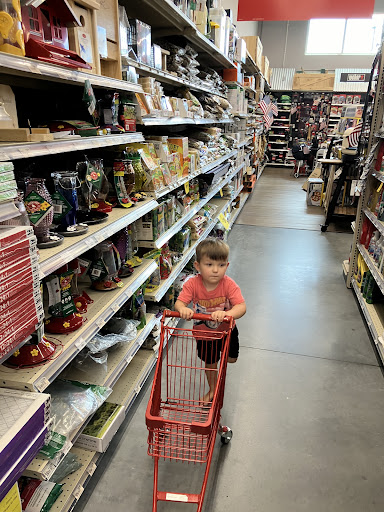Auto Key Programming: 7 Powerful Success Tips for 2025
Why Auto Key Programming Is Essential for Modern Vehicle Owners
Auto key programming is the process of syncing electronic car keys and fobs with your vehicle’s computer system so they can start the engine and operate security features. Unlike simple key cutting, this involves digital communication between your key’s transponder chip and the car’s immobilizer system.
Quick Answer – Auto Key Programming Basics:
– What it is: Electronic pairing of keys with vehicle computers
– When needed: New keys, lost keys, dead batteries, or security resets
– Methods: Dealer service, mobile locksmith, or DIY with programming tools
– Cost range: $50-$500 depending on method and vehicle complexity
– Time required: 15 minutes to 2 hours based on programming method
If you’re running late for work, the last thing you need is a missing car key. Modern vehicles use sophisticated security systems that require proper programming – simply cutting a physical key won’t start today’s cars. Whether you need a spare key, lost all your originals, or your key fob stopped working, understanding the programming process can save you time and money.
The stakes are higher than ever. Today’s vehicles rely on encrypted communication between keys and engines. A transponder chip in your key must “handshake” with your car’s computer before the engine will turn over. Smart fobs add remote functions like open uping doors and starting engines from a distance.
The helpful team at Lowcountry Ace has helped countless customers steer the complexities of modern vehicle security. Our experience with digital systems and customer service has shown us that auto key programming doesn’t have to be intimidating when you understand the basics.
Quick look at auto key programming:
– reprogram car key
– auto key replacement
– rekey car ignition cost
Understanding Modern Car Keys & How Programming Works
Gone are the days when a simple metal key could start any car. Today’s automotive keys are like tiny computers that need to have a digital conversation with your vehicle before anything happens.
Modern car keys rely on transponder technology, RFID (Radio Frequency Identification), and rolling codes to communicate with your vehicle’s immobilizer system. Think of it as a secret handshake between your key and your car – without the right signal, your engine stays put no matter how perfectly the physical key fits.
When you insert or bring your key near the ignition, it sends encrypted signals through something called the CAN-bus network to your vehicle’s Electronic Control Unit (ECU). This is essentially your car’s brain, and it’s pretty picky about which keys it trusts.
The electronic identity of your key lives in EEPROM chips – that’s short for Electrically Erasable Programmable Read-Only Memory. These tiny chips store unique codes that must perfectly match what’s already programmed into your vehicle’s computer system. Without this digital match, your car treats the key like a stranger at the front door.
You’ll encounter three main types of modern keys. Transponder keys look like traditional keys but hide a small chip in the plastic head that transmits a unique code when activated. Key fobs are those handy remote devices that let you lock and open up doors, pop trunks, and sometimes start engines from across the parking lot using rolling code technology. Smart keys are the show-offs of the key world – these proximity keys don’t even need to touch the ignition and allow push-button starting when they sense you’re nearby.
According to research on vehicle security systems, modern immobilizer technology has significantly reduced vehicle theft rates since its widespread adoption.
How Does the Chip Talk to the Car?
The magic happens through what’s called a frequency handshake between your key and vehicle. When you turn the ignition, your car’s antenna ring around the ignition cylinder sends out a low-frequency signal at 125 kHz. This signal actually powers up the transponder chip in your key.
Once powered up, the chip transmits back its unique identification code through encryption to prevent anyone from eavesdropping on the conversation. Your vehicle’s ECU receives this code and quickly compares it against the list of authorized keys stored in its memory.
If there’s a match, the immobilizer system gives the green light and allows the engine to start. No match means the fuel pump and ignition system stay locked down. This entire digital handshake happens in milliseconds.
Auto Key Programming vs. Key Cutting
Key cutting and auto key programming are two completely different processes, even though you need both for a working car key.
Key cutting is the physical process of shaping a metal blade to match your vehicle’s lock cylinders. Auto key programming deals with the electronic ID of the key. Even with a perfectly cut key that turns smoothly in the ignition, your car won’t start unless the transponder chip is programmed to communicate with the vehicle’s security system.
Modern vehicles essentially use two-factor security – the physical key (something you have) and the electronic code (something the key knows). Both elements must work together for successful operation.
When Do You Need Auto Key Programming?
Life has a way of throwing curveballs when you least expect them. One day you’re rushing to get the kids to school, and suddenly your key fob won’t start the car. These moments remind us why understanding auto key programming can be a real lifesaver.
The most obvious time you’ll need programming services is when you’ve lost all your keys. But there are other situations that catch vehicle owners off guard. Your key might work perfectly fine until the transponder chip gets damaged from being dropped. Sometimes a simple key fob battery replacement triggers the need for reprogramming, especially in newer vehicles with sensitive security systems.
Spare key creation is something the helpful team at Lowcountry Ace always recommends. It’s much easier (and cheaper) to program an extra key while you still have a working one than to wait until you’re completely locked out.
Other times programming becomes necessary include security module replacement after repairs, ensuring proper function for vehicle resale, or simply as lockout prevention.
Auto Key Programming for Spare Keys
Creating a backup key while you still have a working one is honestly one of the smartest moves you can make as a car owner. The process is usually straightforward and affordable compared to the alternative of being completely keyless.
Most vehicles make it relatively easy to add additional keys when you have at least one functioning key. The onboard programming procedures are designed for this scenario, which keeps costs reasonable and timing quick.
A valet key can be particularly handy – it’s a limited-function spare that starts your engine and opens doors but won’t access your trunk or glove compartment.
Auto Key Programming After All Keys Are Lost
When you’ve lost every working key, the situation becomes significantly more complex and expensive. Your vehicle’s security system essentially goes into lockdown mode, requiring a complete immobilizer reset and re-sync process.
This scenario typically requires professional intervention because the security PIN retrieval process involves specialized diagnostic equipment and manufacturer access codes. The vehicle won’t communicate normally when it doesn’t recognize any keys, making DIY solutions nearly impossible.
The cost difference is striking – adding a spare key might run $50-150, while programming after losing all keys can easily cost $200-500 or more.
Programming Methods: Dealer vs. Locksmith vs. DIY
When you need auto key programming, you’ve got three main paths: the dealership, a professional locksmith, or tackling it yourself with programming tools. Each option comes with its own trade-offs between cost, convenience, and peace of mind.
The cost difference between these methods can be dramatic. Dealer programming typically runs $200-500, locksmith services fall in the $100-300 range, while DIY programming involves a one-time tool purchase of $85-400.
Dealer Service Pros & Cons
Dealership programming is like going to the source – they have direct access to manufacturer databases and the latest programming protocols. They can handle even the trickiest situations, like vehicles with proprietary encryption or unusual security systems.
But convenience and cost are different stories. Dealer service often means scheduling appointments days in advance. If your car won’t start, you’re looking at towing costs on top of programming fees. The total bill can easily hit $400-600 when you factor in all the extras.
The warranty coverage dealers provide does offer peace of mind. If something goes wrong with the programming, they’ll typically fix it at no charge.
Mobile Locksmith Options
Professional automotive locksmiths have really stepped up their game in recent years. Many now carry sophisticated programming equipment that rivals what you’d find at dealerships. The big difference? They come to you.
A good automotive locksmith can handle key cutting and programming right in your driveway or workplace parking lot. No appointments, no towing, no sitting in a waiting room.
The convenience factor is huge. When you’re dealing with a lockout situation or dead key fob, having someone show up within an hour can be a lifesaver. Many locksmiths also offer 24/7 emergency service, which dealers rarely provide.
DIY with Stand-Alone Programmers
The DIY auto key programming market has exploded in recent years. What used to require expensive dealer equipment is now accessible through OBD dongles, app-based systems, and stand-alone programmers that regular folks can operate.
Popular tools like the Autel MaxiIM KM100E work with 95% of car models and include lifetime software updates. The XTOOL series offers bidirectional scanning and programming capabilities that were once limited to professional shops.
The math is compelling for multi-car households. If you own several vehicles, a programming tool can pay for itself after just a few uses. Instead of paying $200-300 per programming session, you’re looking at a one-time investment.
But DIY programming isn’t risk-free. Programming errors can sometimes lock you out of your vehicle’s security system, creating a more expensive problem than you started with.
DIY Walk-Through: Program a New Key Safely
Deciding to handle auto key programming yourself can save money, but it’s important to follow the right steps to protect your vehicle’s security system. Most DIY programming connects through your vehicle’s OBD-II port and requires following specific sequences to enter programming mode safely.
Here’s the golden rule: Make sure your vehicle’s battery is fully charged before you begin. Low voltage during programming can scramble your vehicle’s memory and turn a simple key programming job into an expensive repair nightmare.
Step 1 – Gather Tools & Verify Compatibility
Getting organized before you start makes the whole process smoother. You’ll need a compatible key programmer like an Autel MaxiIM or XTOOL device, plus a blank key with the correct transponder chip for your vehicle.
Double-check your vehicle’s battery is in good condition and fully charged. You’ll also want a stable internet connection handy for downloading any firmware updates your programming tool might need.
The compatibility check is where many DIY attempts go wrong. Some vehicles need specific adapters or software modules to work properly. Ford models might require the FR011 license, while certain VW models need the VN021 module.
Firmware updates are crucial for success. Many programming tools offer lifetime free updates, but you have to actually download and install them regularly.
Step 2 – Enter Programming Mode
Start by connecting your programmer to the OBD-II port, which you’ll usually find under the dashboard near your left knee when you’re sitting in the driver’s seat.
Turn your ignition to the ON position without starting the engine. Your programmer’s menu system will guide you through selecting your vehicle’s make, model, and year. Be precise here – even small differences in trim levels can affect programming procedures.
Some vehicles will ask for security codes during this process. The immobilizer light on your dashboard often shows when the system is ready for programming.
Step 3 – Sync, Test & Troubleshoot
Once you’re in programming mode, follow your programmer’s step-by-step instructions to add the new key to your vehicle’s memory. This part usually happens pretty quickly, but don’t rush through the testing phase.
Test everything thoroughly before you celebrate. Try starting the engine with your new key, check that door locks work, and verify any remote functions like trunk release or panic buttons.
If something’s not working right, don’t panic. Keys that work intermittently often have weak transponder signals or low batteries. Remote functions sometimes need separate programming sequences from the basic start function.
The whole process usually takes 15 to 30 minutes when everything goes smoothly. Take your time and follow instructions carefully – rushing through steps is the fastest way to create problems.
Tools & Trends: Picking the Right Programmer & What’s Next
Choosing the right auto key programming tool can feel overwhelming with thousands of options available online. Success comes down to matching your specific needs with the right equipment.
Your first consideration should be vehicle coverage – there’s no point buying a programmer that can’t handle your car. The best tools support 95% of vehicle models, but always verify compatibility before purchasing. Update policies matter too, since manufacturers constantly change their security systems.
Connectivity options divide into two camps: Bluetooth wireless tools offer convenience but may have connection issues, while wired USB connections provide more reliable communication.
Popular tools like the Autel MaxiIM KM100E earn high ratings from users because they balance features with reliability. Even entry-level tools can deliver results when properly matched to your needs.
Matching Vehicle & Programmer
Modern vehicles speak different electronic languages, and your programming tool needs to be fluent in your car’s specific dialect. Newer vehicles often use CAN-FD or DoIP communications that require compatible equipment.
Some manufacturers add extra security layers that complicate programming. FCA AutoAuth systems protect certain Chrysler, Dodge, Jeep, and Ram vehicles with additional authentication requirements.
Key limit counts vary by vehicle – some allow only two programmed keys while others accept up to eight. Model year cutoffs create another compatibility challenge, as manufacturers often change protocols between generations.
Future of Auto Key Programming
The automotive world is racing toward a connected future that’s reshaping auto key programming in exciting ways. Ultra-Wide Band (UWB) keys use precise positioning technology to know exactly where you are relative to your vehicle.
Biometric integration is moving beyond fingerprint scanners to include facial recognition systems. Smartphone-based digital keys are becoming mainstream, letting your phone function as your primary vehicle access device.
Over-the-air (OTA) updates promise to revolutionize how we think about key programming. Instead of visiting a dealer or locksmith, your vehicle could receive security updates wirelessly.
Electric vehicle integration adds new complexity as EVs require specialized programming for charging systems. Cloud-based security systems are emerging that centralize key management, potentially making lost keys less problematic but raising new privacy questions.
Frequently Asked Questions about Auto Key Programming
The helpful team at Lowcountry Ace gets asked about auto key programming regularly, especially from customers in the James Island and Folly Beach areas who are dealing with key issues for the first time.
What tools do I need to program a modern smart key?
The tools you need depend on your specific vehicle, but most modern smart keys require an OBD-II programmer like the Autel MaxiIM series or XTOOL devices. Think of these as translators that help your new key “talk” to your car’s computer system.
Beyond the programmer itself, you’ll need the right blank key with the correct transponder chip for your vehicle. Not all chips are the same – a Honda chip won’t work in a Ford, even if the physical key looks similar.
Power stability is crucial during programming. A dying car battery can interrupt the process and potentially cause expensive problems with your vehicle’s computer system. Some European vehicles need special adapters or software licenses.
Can I program a key myself if all originals are gone?
This is where things get tricky. Programming a spare key when you have a working original is straightforward. But when all keys are lost, it’s more like trying to break into a secure system.
Most modern vehicles lock down their security systems when no authorized keys are present. The car essentially goes into “stranger danger” mode and won’t accept new keys through normal programming procedures.
DIY programming after total key loss typically requires advanced diagnostic equipment that can reset the entire immobilizer system. You’ll need access to manufacturer security databases and vehicle-specific PIN codes. The risk of permanently disabling your vehicle’s security system makes this a job where professional help often saves money.
How often should I update my key programmer’s firmware?
Think of firmware updates like getting the latest phone book – without them, your programmer won’t know how to talk to newer vehicles. Monthly update checks are ideal, though you might get away with quarterly updates if you’re only working on older vehicles.
Quality programmers offer lifetime free updates, but “free” doesn’t mean “automatic.” You need to actively download and install these updates, usually through a computer with internet access.
Vehicle manufacturers constantly update their security systems, and your programming tool needs to keep pace. Skipping updates makes your investment less valuable over time and can leave you stuck when you need the tool most.
Conclusion
Auto key programming doesn’t have to be intimidating when you understand the basics. What started as simple metal keys has transformed into sophisticated security systems that protect your investment and keep your family safe. The electronic handshake between your key and your car’s computer might seem complex, but the principles are straightforward once you know what’s happening under the hood.
The smart move is always planning ahead. Creating spare keys while you still have working ones costs a fraction of what you’ll pay when you’re locked out completely. We’ve seen too many customers at our Riverland Market location who waited until they were stranded to think about backup keys. Don’t be that person shivering in a parking lot at 6 AM because your only key decided to stop working.
Your three main options – dealer service, professional locksmith, or DIY programming – each have their place. Dealers offer complete coverage but at premium prices. Mobile locksmiths provide convenience and moderate costs. DIY tools can be cost-effective if you’re comfortable with technology and have multiple vehicles to work on.
The future of automotive security is moving toward digital keys and smartphone integration, but today’s transponder technology will be around for years to come. Whether your car uses a traditional key fob or the latest smart key system, the programming process remains essential for proper operation.
Safety always comes first when dealing with vehicle security systems. A programming mistake can leave you with an expensive repair bill and a car that won’t start. When you’re unsure about compatibility, security codes, or proper procedures, professional help is worth the investment.
The helpful team at Lowcountry Ace understands that automotive security challenges don’t follow convenient schedules. We’ve helped countless James Island and Folly Beach residents steer these situations with practical advice and cost-effective solutions. Our experience with both traditional and modern key systems means we can point you toward the right approach for your specific situation.
Remember: your key is more than just a way to start your car – it’s part of a security system protecting thousands of dollars of investment. Treat it with the respect it deserves, keep spares handy, and don’t hesitate to seek professional guidance when needed.
For more information about our key services and how we can help keep you mobile and secure, visit us at our Riverland Market location on Folly Road, or explore our comprehensive key services online.
Lowcountry Ace Hardware: Your one-stop shop for home improvement. We offer quality products from trusted brands and expert advice from our experienced staff. Located on James Island, visit us for tools, hardware, fishing gear, power tools, building materials, grills & smokers, electrical and plumbing supplies, and more.

















